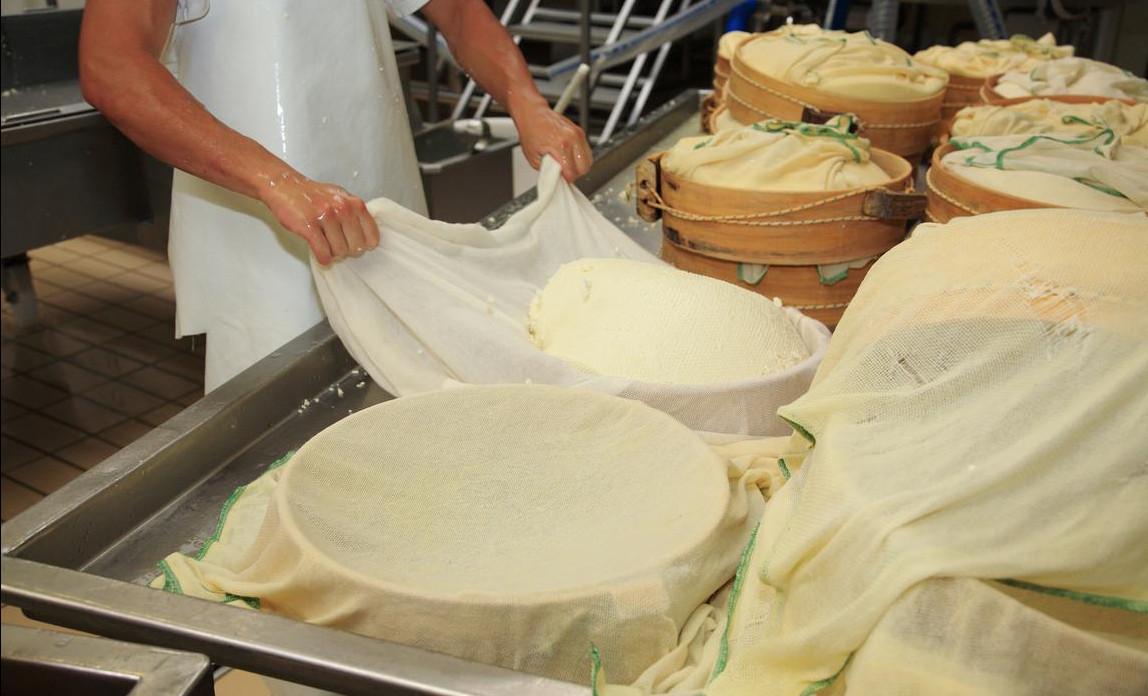Cheese Factory Melbourne: Experience the Art of Cheese
Cheese Factory Melbourne: Experience the Art of Cheese
Blog Article
Recognizing the Science Behind Cheese Manufacturing: From Milk Option to End Product
The intricate process of cheese manufacturing begins with the cautious choice of milk, a selection that profoundly affects the final product's flavor and structure. Recognizing the crucial duty of microorganisms in fermentation discloses just how these microorganisms transform lactose into lactic acid, a crucial ingredient in developing the cheese's personality. cheese store melbourne.
Milk Selection Process
The option of milk is a critical action in the cheese production process, as it straight influences the flavor, texture, and quality of the last item. Various aspects must be taken into consideration during this option, consisting of the source of the milk, the breed of the pets, and their diet. Cow's milk, goat's milk, and lamb's milk each possess unique residential properties that contribute to the distinct qualities of different cheese selections.

Additionally, the dietary content of the milk, affected by the animal's diet regimen, can modify celebrity's final characteristics. Top notch milk, sourced from healthy pets, makes sure an exceptional cheese item, highlighting the importance of stringent quality assurance actions in the milk selection procedure. Hence, mindful consideration in milk option is important for effective cheese manufacturing.

Function of Bacteria in Fermentation
Complying with the careful option of milk, the fermentation process plays a pivotal duty in cheese manufacturing, where microorganisms are introduced to change the milk into cheese. The main feature of these germs is to transform lactose, the sugar present in milk, right into lactic acid. This acidification not only modifies the pH of the milk but additionally plays an important role in flavor development, structure, and preservation of the last product.
Lactic acid microorganisms (LAB), such as Lactococcus and Streptococcus species, are commonly used in cheese production because of their ability to thrive in milk and their payment to the fermentation process. The metabolic activities of these microorganisms cause the production of various metabolites, including taste compounds and antimicrobial materials, which hinder spoilage microorganisms and pathogenic bacteria, thus boosting cheese safety.
In addition, the fermentation process affects the total attributes of celebrity, including its scent, preference, and texture. Various strains of germs can impart distinct tastes and contribute to the one-of-a-kind profiles of various cheese types. Therefore, the selection of microbial societies is an essential step in attaining the desired cheese high quality and uniformity.
Coagulation and Curd Development
In the cheese manufacturing process, coagulation notes an essential transition from liquid milk to solid curds. This change is largely generated by the enhancement of rennet, an enzyme that acts upon casein, the major protein in milk. When rennet is presented, it promotes the gathering of casein particles, resulting in the formation of a gel-like framework. This procedure is often complemented by the acidic environment created by lactic acid bacteria, which additionally aids in coagulation by decreasing the pH of the milk.
The resulting curds are formed as the fluid whey starts to separate. Factors such as temperature level, the amount of rennet utilized, and the time enabled for coagulation are vital in identifying the structure and quality of the curds. As an example, greater temperature levels and longer coagulation times normally produce firmer curds, suitable for tougher cheeses. cheese for sale online.
When curds are developed, they are cut into smaller sized pieces, allowing whey to leave a lot more effectively. This action is important, as it affects the dampness material and overall attributes of the last cheese product. Appropriate monitoring of coagulation and curd development is vital for accomplishing details cheese designs and desired flavor accounts.
Aging and Taste Growth
After the curd has been developed and whey has actually been drained pipes, the following stage in cheese manufacturing is aging, also referred to as growth. This critical process substantially affects celebrity's last taste, appearance, and aroma. During aging, various biochemical and microbiological my latest blog post improvements take place, impacting the general sensory account.
The aging setting, including temperature and humidity, plays an essential role in flavor development. Enzymes and germs existing in the cheese assist in the breakdown of proteins and fats right into smaller sized molecules, causing the development of amino acids, fats, and unpredictable compounds. These makeovers add to the intricacy of taste and scent, with distinct profiles arising based on the certain cheese variety.
In addition, the duration of aging is essential; much shorter aging periods typically produce milder tastes, while longer maturation lead to even more robust and nuanced accounts. Factors such as the milk source, cheese kind, and specific aging methods further improve the diversity of flavors produced. Eventually, aging is a fragile equilibrium of time, environmental problems, and microbial activity, finishing in the unique qualities that define each cheese range.
Quality Assurance in Cheese Manufacturing
Ensuring high requirements throughout the cheese manufacturing procedure is necessary for supplying a quality item that satisfies customer expectations - cheese shop melbourne. Quality control (QC) encompasses numerous stages, starting from raw milk choice to the final aging procedure. Each stage needs meticulous focus to detail to stop contamination and make sure uniformity
During milk option, producers must examine factors such as fat web content, pH levels, and microbial high quality. Regular screening for somatic cell matters and microbial loads is critical to make sure the milk's suitability for cheese production. In the manufacturing phase, QC procedures include keeping an eye on the temperature, acidity, and rennet task, which significantly influence appearance and taste.
As cheese matures, constant sensory examinations and laboratory evaluations are conducted to evaluate taste advancement, structure, and general quality. Any kind of deviations from developed standards necessitate rehabilitative activities to maintain item integrity.
In addition, documentation and traceability are vital parts of effective top quality control, making it possible for manufacturers to track the cheese from ranch to consumer. By executing robust QC protocols, cheese producers can not only enhance product top quality but likewise build customer trust fund, company website ensuring their place in a competitive market.

Verdict
Finally, the science of cheese production includes several critical phases, each substantially affecting the end product. The careful option of milk, the vital role of microorganisms in fermentation, the improvement have a peek here of liquid milk right into curds with coagulation, and the aging process jointly add to the advancement of unique tastes and structures. Furthermore, rigorous high quality control measures make certain that each cheese range meets well-known requirements, consequently enhancing consumer complete satisfaction and maintaining the honesty of the cheese-making practice.
Report this page